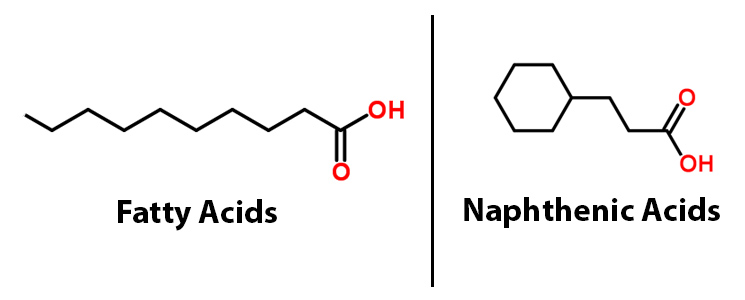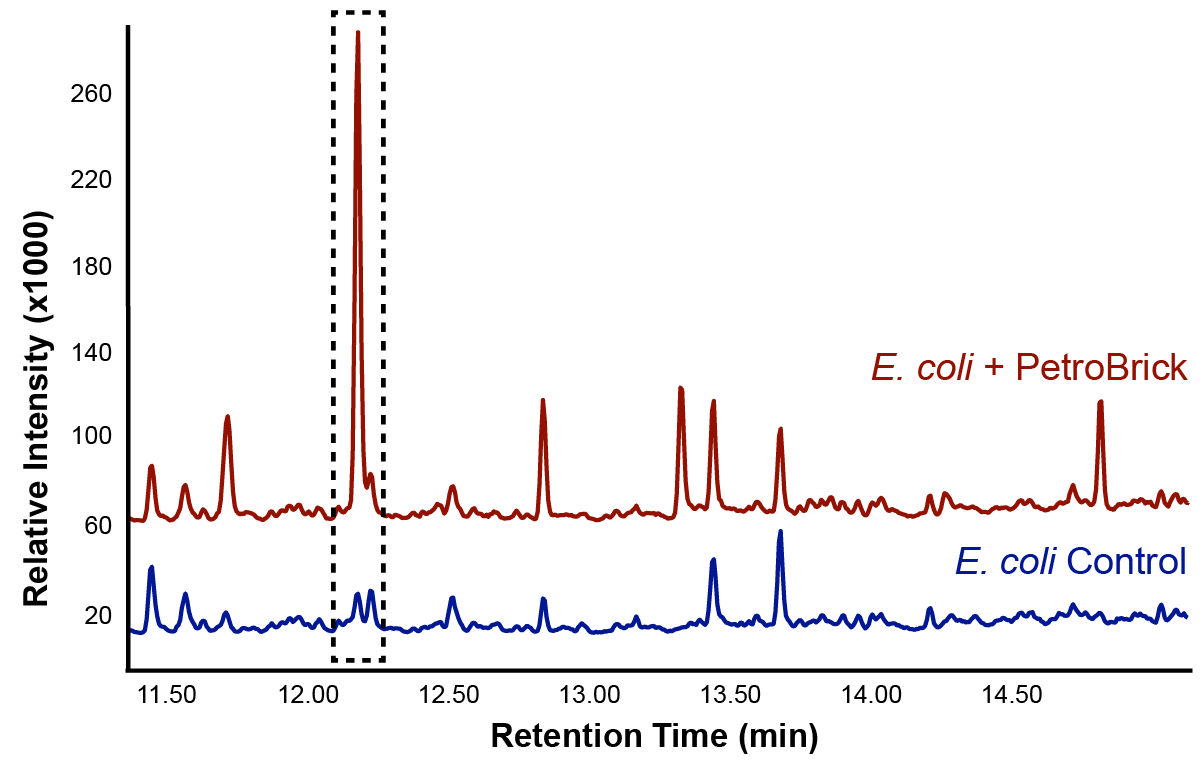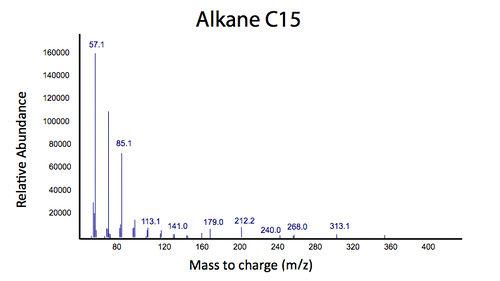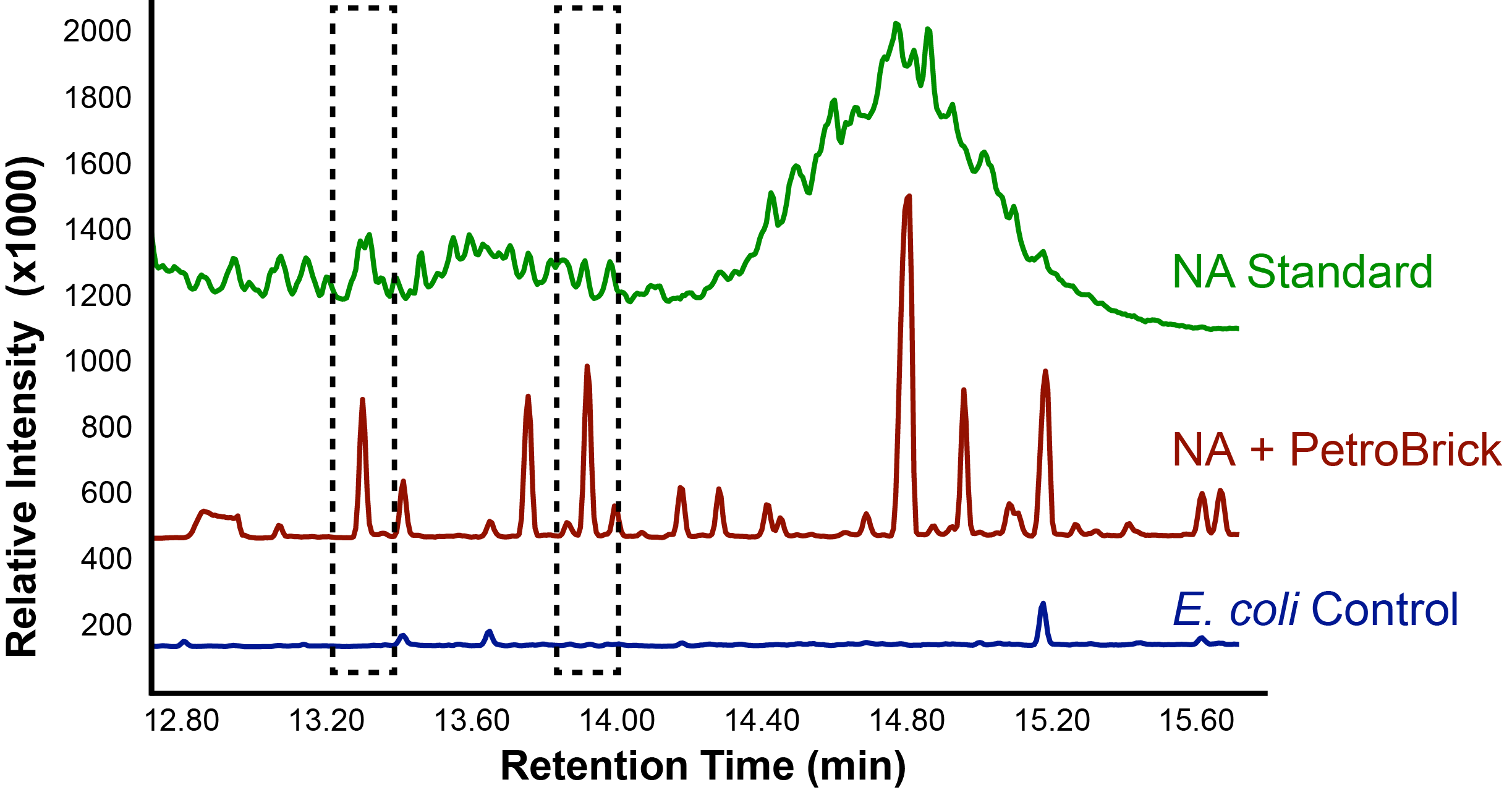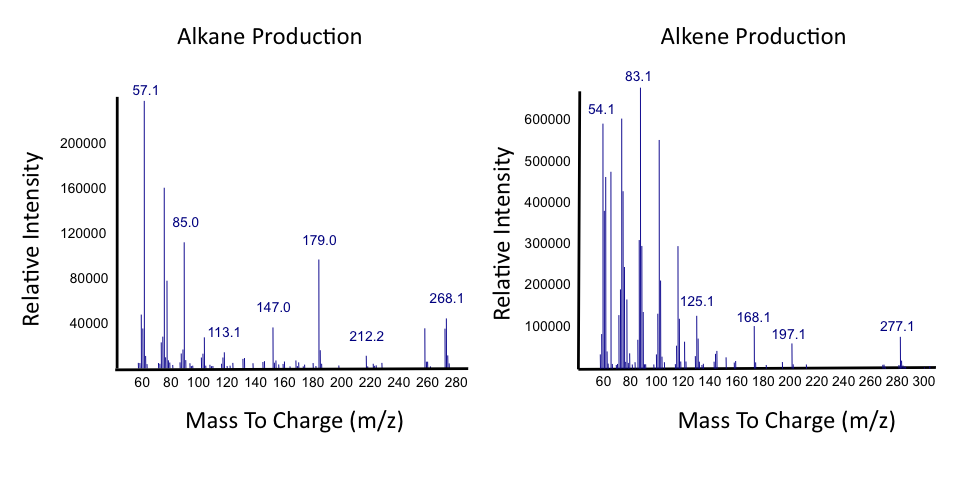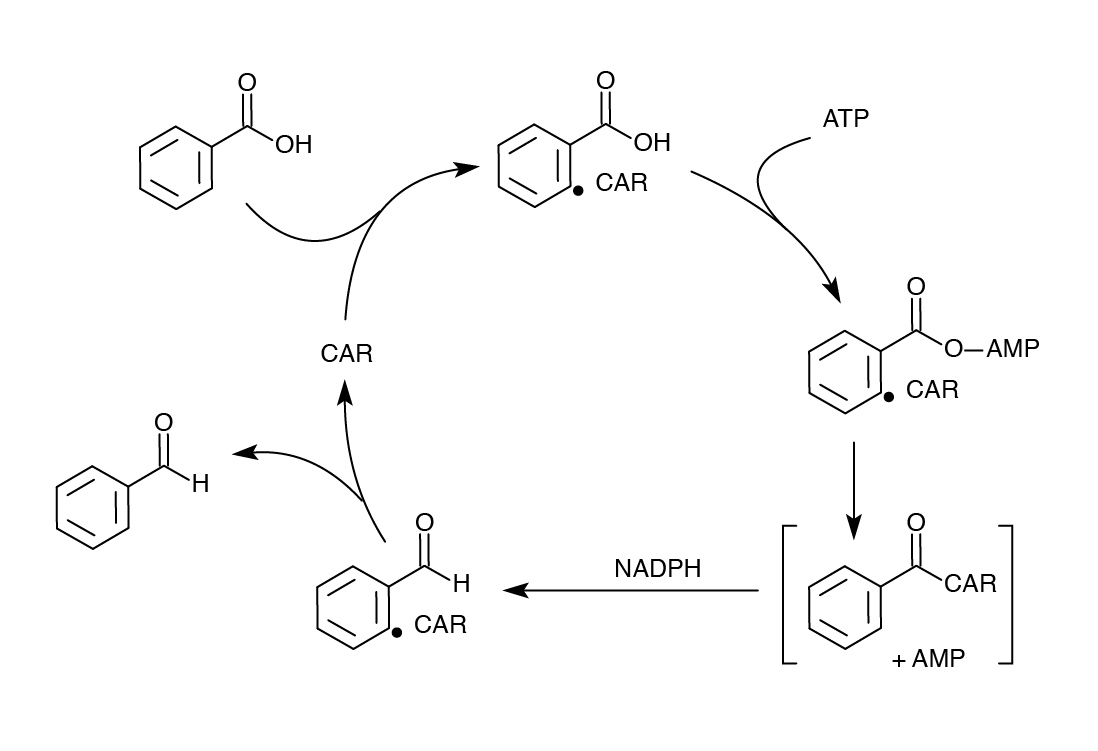Team:Calgary/Project/OSCAR/Decarboxylation
From 2012.igem.org


Hello! iGEM Calgary's wiki functions best with Javascript enabled, especially for mobile devices. We recommend that you enable Javascript on your device for the best wiki-viewing experience. Thanks!
Decarboxylation

Why Decarboxylation?
Though there is great diversity within the naphthenic acids (NAs) class of compounds, all share the common chemical feature of a carboxylic acid group. The carboxyl group is the primary cause for the toxicity of these compounds, allowing them to traverse cell membranes and react with cellular materials (Frank et al, 2009). NAs are recalcitranct (persistent in the environment), potentially harmful to the surrounding ecosystem (Clemente & Fedorak, 2005) and corrosive to equipment used for extraction and transport of petroleum materials (Slavcheva et al, 1999). Corrosion of pipelines leads to higher maintenance costs as well as the grim possibility of leakage into the environment. There is a need for methods to degrade naphthenic acids that are not prohibitively expensive or that would cause production of other hazardous chemicals.
The main goal of OSCAR is to turn toxins like these into useable hydrocarbons by removing the carboxylic acid group(s)(Behar & Albrecht, 1984). Since naphthenic acids from petroleum deposits are a variable mixture, an enzymatic process with broad specificity is necessary. With the removal of the carboxylic acid moiety, we aim to produce alkanes suitable for use as fuel. The goal of this subproject was to find one or more suitable pathways to accomplish the decarboxylation of compounds such as naphthenic acids with the broadest specificity.
The PetroBrick
The 2011 Washington iGEM team developed the PetroBrick, a BioBrick consisting of two primary genes. These include acyl-ACP reductase (AAR), which reduces fatty acids bound to ACP to fatty aldehydes, and a second gene called aldehyde decarbonylase (ADC), which subsequently cleaves the entire aldehyde group and results in a hydrocarbon chain. Essentially this allows for hydrocarbons to be produced from glucose. What we realized though, is that these fatty acids that the PetroBrick looks like, has a very similar structure to naphthenic acids.
This led us to believe that the PetroBrick may also have the potential to turn naphthenic acids in to hydrocarbons! This could be a perfect solution to remeidating our naphthenic acids. First though, we had to show that the PetroBrick did in fact work as expected. We had some difficulty with the DNA form the registry and had to get the Washington team to send it to us. Initially the ability for the Petrobrick to produce alkanes from glucose was analyzed in order to verify that the Petrobrick was working as described by the 2011 Washington team. This was demonstrated in Figures 2 and 3.
With the Petrobrick shown to be able to successfully produce alkanes, it was time to test it out on naphthenic acids, so see if they could be selectively converted into alkanes! This experiment used commercially available naphthenic acid fractions including a large number of different complex naphthenic acid compounds.
Successful conversion of NA's into Hydrocarbons!
The above graphs indicate that hydrocarbons were successfully produced from E.coli that contained the PetroBrick plasmid, as analysed with GC-MS. In Figure 2, E.coli containing the PetroBrick had significantly higher hydrocarbon peaks than in a control of E.coli that did not contain the PetroBrick plasmid. Not only was the PetroBrick able to degrade naphthenic acids into alkanes, but it was also able to produce alkenes as shown by Figure 3, indicating that the PetroBrick worked how we had expected it to!
Nocardia Carboxylic Acid Reductase (CAR)- Can we do better?
Despite our success, we wanted to improve on our results to see if we could get a higher yield or possibly target other compounds. One of our original fears in using the PetroBrick to decarboyxlate naphthenic acids was that the first enzyme AAR is thought to be highly specific for fatty acids bound to ACP. As a result, we had worried about its compatibility with naphthenic acids. We had sought another enzyme in the literature called carboxylic acid reductase (CAR) that was documented to perform a similar task as AAR, converting fatty acids to aldehydes, but with much lower specificity (He et al, 2004). This enzyme, from N. iowensis does not require covalent attachment to ACP so would likely be much broader in substrate specificity. It requires a second gene from N. iowensis, called Nocardia phosphopantetheinyl transferase (NPT) necessary to append a 4’-phosphopantetheine prosthetic group to CAR required for its full function (Venkitasubramanian et al, 2006).
Additionally, we had found a second alternative: olefin-forming fatty acid decarboxylase (OleT) from Jeotgalicoccus sp. ATCC 8456. This is a decarboxylase of the cytochrome P450 family that acts on fatty acids, but has also been documented to have low substrate specificity (Rude et al, 2011). What was attractive with this was that it was one single enzyme that go do the job of the PetroBrick! Now that we knew that our decarboxylation approach was valid, it was time to start testing and comparing this gene to the PetroBrick
Where are we at?
N. iowensis (NRRL 5646) was purchased from DSMZ and rehydrated, then grown in both solid and liquid brain heart infusion (BHI) media. CAR and NPT were successfully cloned out and amplified with primers adding restriction enzyme cut sites. CAR was ligated into the PET vector and verified by a restriction digest while NPT was cloned into psb1c3 (BBa_K902061.) and similarly verified.
CAR was found to have six cut sites deemed illegal for BioBrick construction: one XbaI site, two EcoRI sites, and three NotI sites. These were first to be addressed by a multi-site mutagenesis derived from the QuikChange® Multi Site Directed Mutagenesis Kit, but this showed little success. Instead, a more time-consuming series of conventional single-site mutagenesis procedure was favoured, using the KAPPA amplification system. The XbaI and EcoRI sites were eliminated first, and following these steps and subsequent verification of their success, the mutated CAR was amplified out of the pET Vector and ligated into the PSB1C3 vector (BBa_K902062.). OleT was successfully amplified from the Jeotgalicoccus sp. ATCC 8456. Like CAR, OleT was inserted in a PET vector before placing it into a BioBrick, as two illegal cut sites adjacent to one another needed to be mutagenized. This part is now being ligated into psb1c3. We are currently in the process of constructing all three parts under contorl of a tetR promoter and ribosomal binding site (BBa_J13002), and then constructing these composite parts together as outlined below.
Final testing constructs
Final testing constructs are almost complete. These are illustrated in figure 7 and will allow us to compare the three different approaches. Unfortunately, as Washington only sent us the PetroBrick and not the two individual components, we will have to compare a combination of the PetroBrick and Car/NPT to the PetroBrick alone and to oleT.
 "
"
